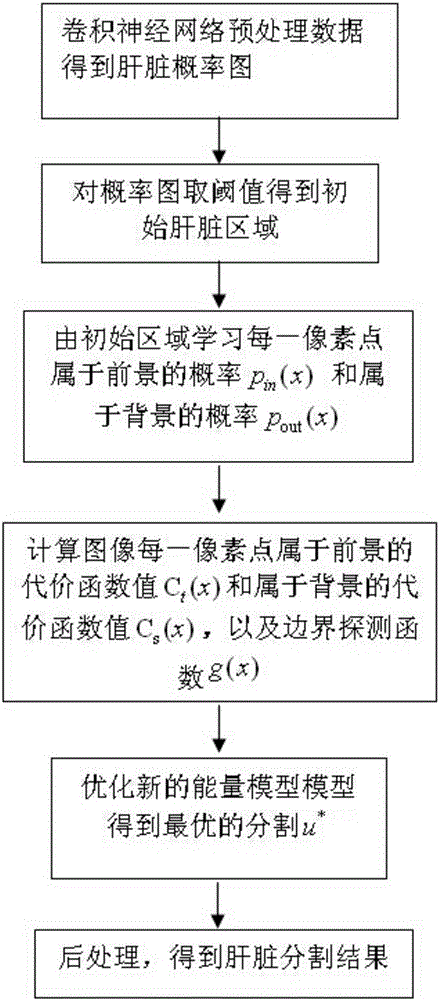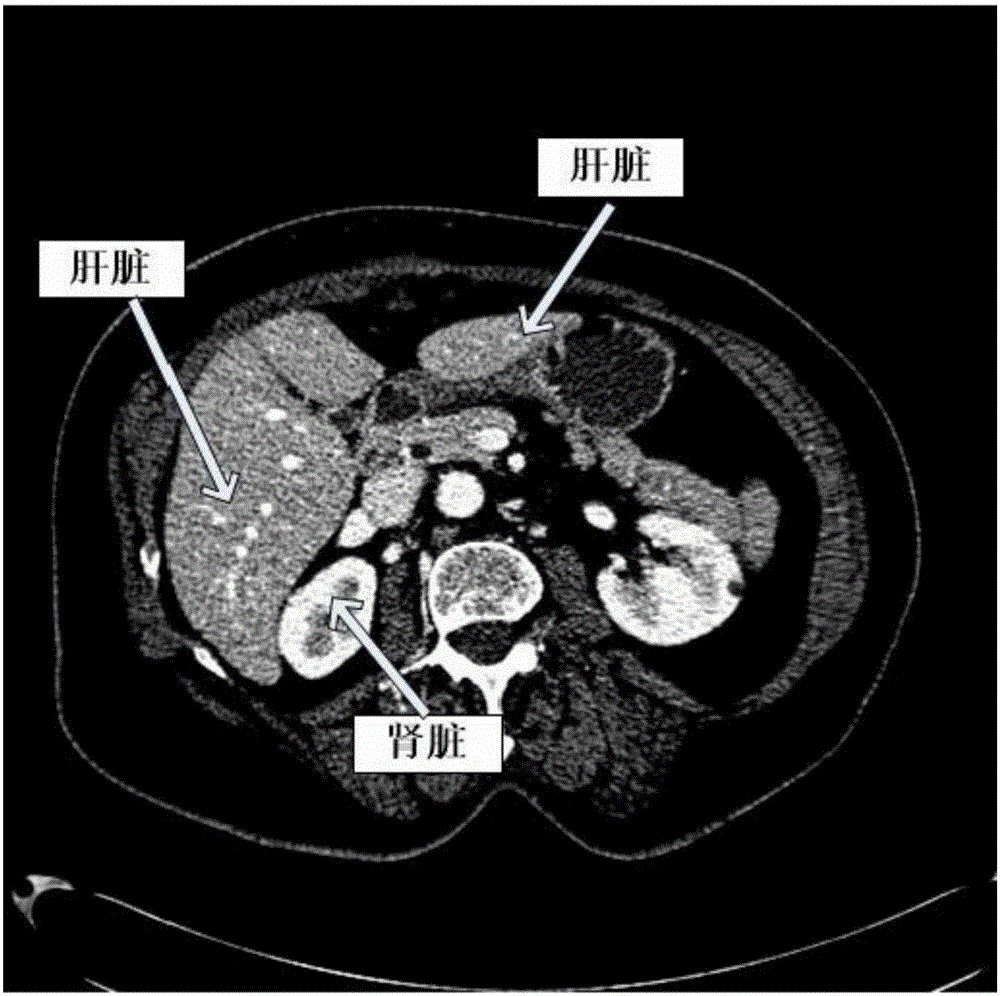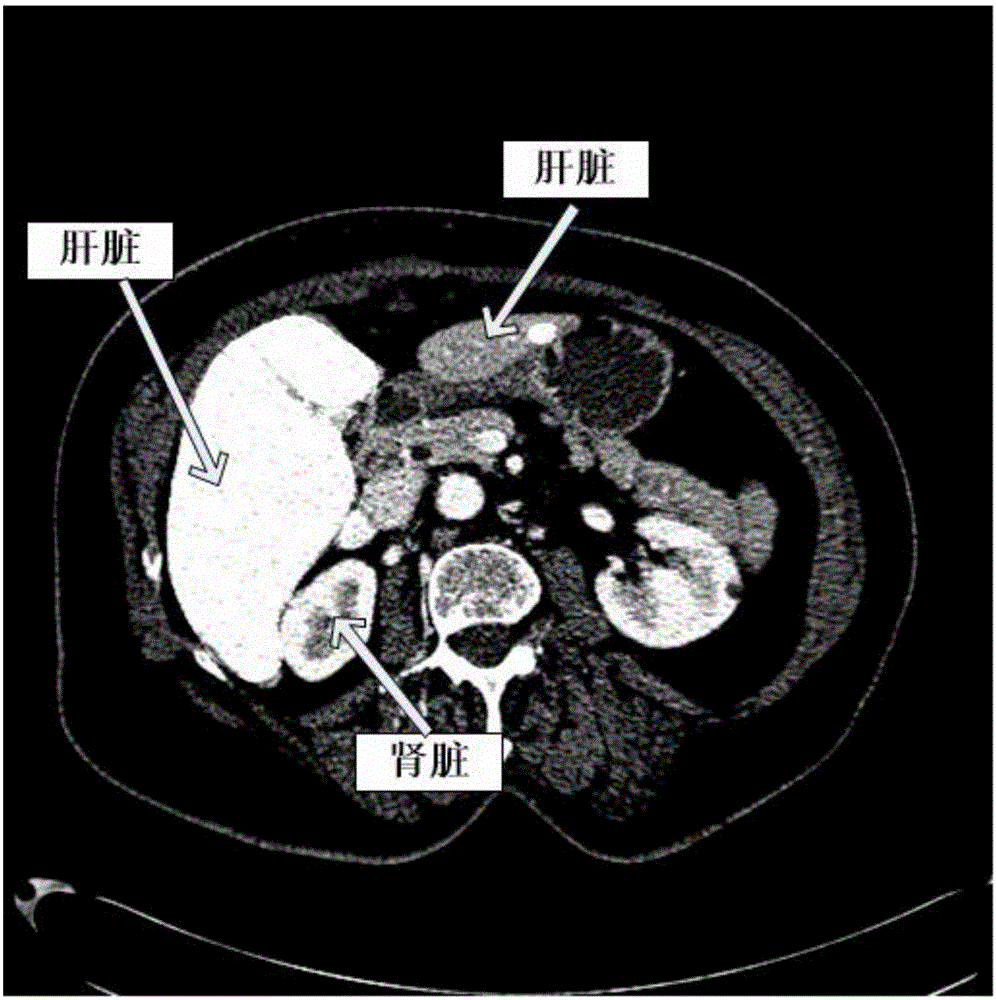Fully-automatic three-dimensional liver segmentation method based on local apriori information and convex optimization
A priori information, 3D liver technology, applied in the field of medical image processing, can solve the problems of under-segmentation and low accuracy of liver edge segmentation
- Summary
- Abstract
- Description
- Claims
- Application Information
AI Technical Summary
Problems solved by technology
Method used
Image
Examples
Embodiment Construction
[0049] Below in conjunction with accompanying drawing and specific embodiment the present invention is described in further detail:
[0050] The following examples can enable those skilled in the art to understand the present invention more comprehensively, but do not limit the present invention in any way.
[0051] Such as figure 1 As shown, a fully automatic 3D liver segmentation method based on local prior information and convex optimization is used to segment the liver in computed tomography angiography images. The specific steps are as follows:
[0052] 1. The size of the input liver CTA scan image I is 512×512×245, and the window width and level are adjusted so that the gray scale range of the liver is between 0 and 255. Test the image in the trained convolutional neural network to obtain a probability map L of the same size as the original image. The probability map gives the probability L(x) that each point of the image belongs to the liver, and its value ranges from...
PUM
 Login to View More
Login to View More Abstract
Description
Claims
Application Information
 Login to View More
Login to View More - R&D
- Intellectual Property
- Life Sciences
- Materials
- Tech Scout
- Unparalleled Data Quality
- Higher Quality Content
- 60% Fewer Hallucinations
Browse by: Latest US Patents, China's latest patents, Technical Efficacy Thesaurus, Application Domain, Technology Topic, Popular Technical Reports.
© 2025 PatSnap. All rights reserved.Legal|Privacy policy|Modern Slavery Act Transparency Statement|Sitemap|About US| Contact US: help@patsnap.com



